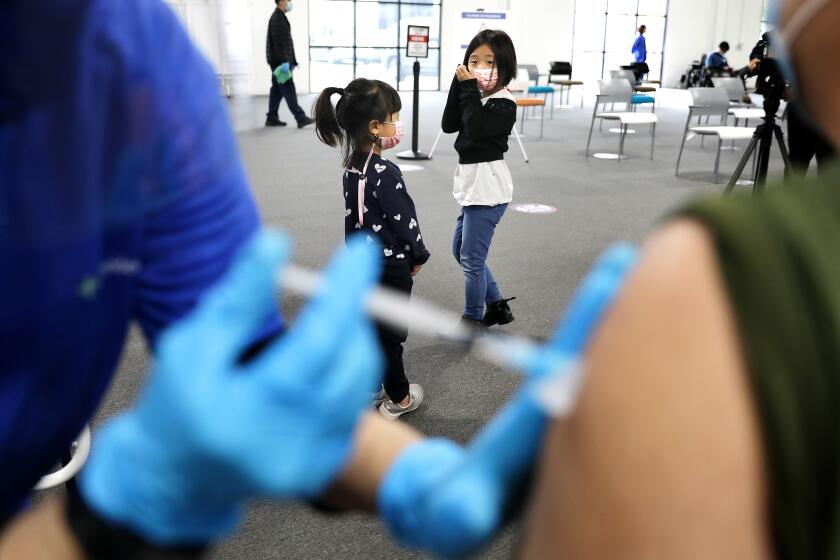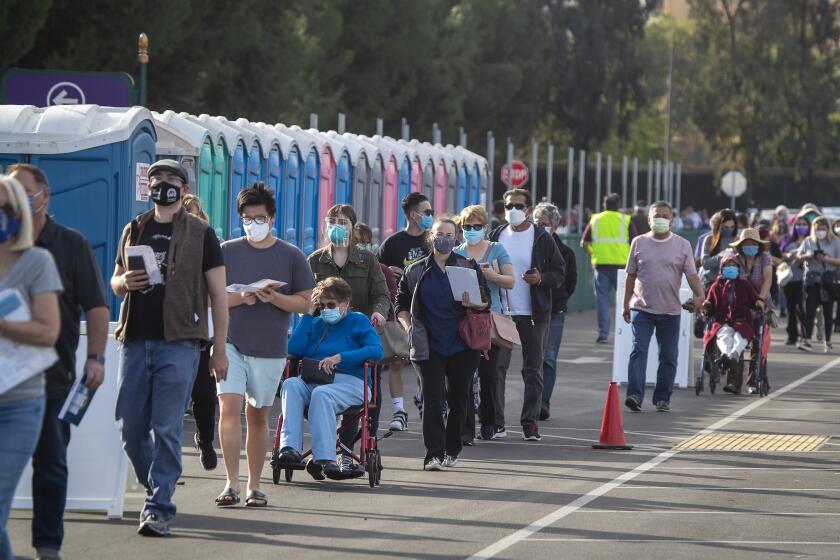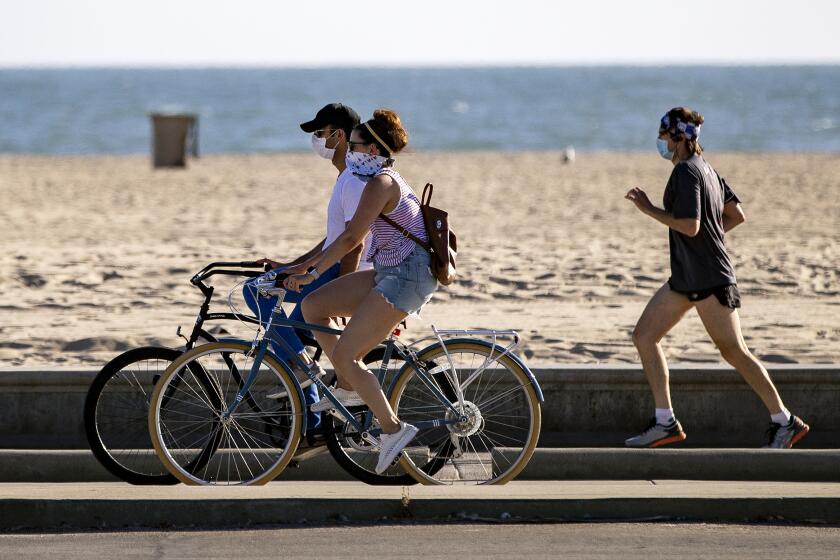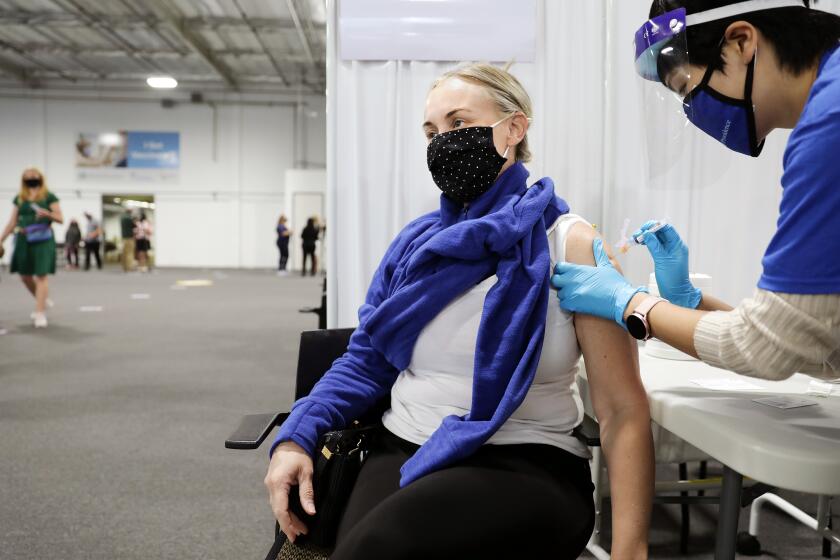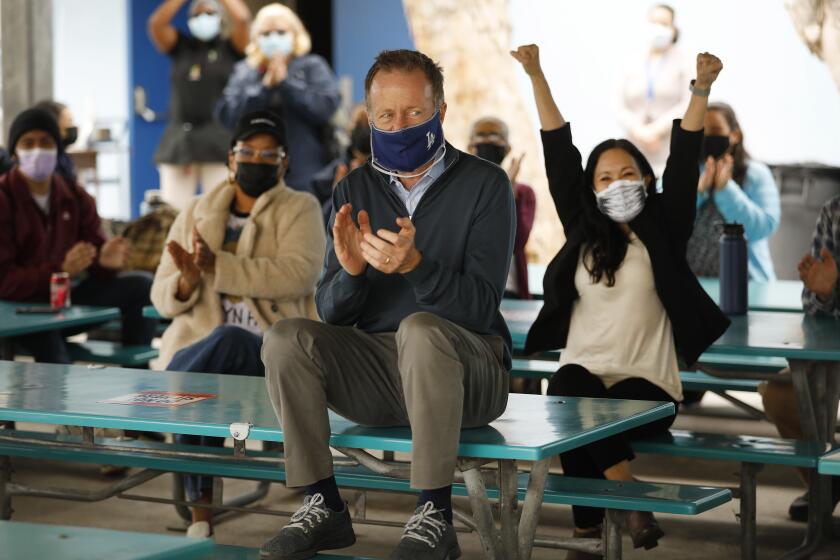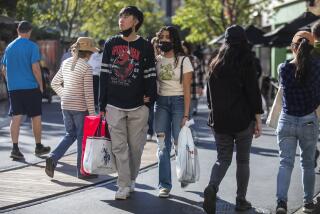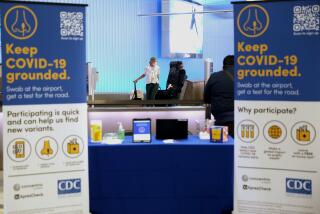L.A. County hits yellow tier marker; widest reopening could be a week away
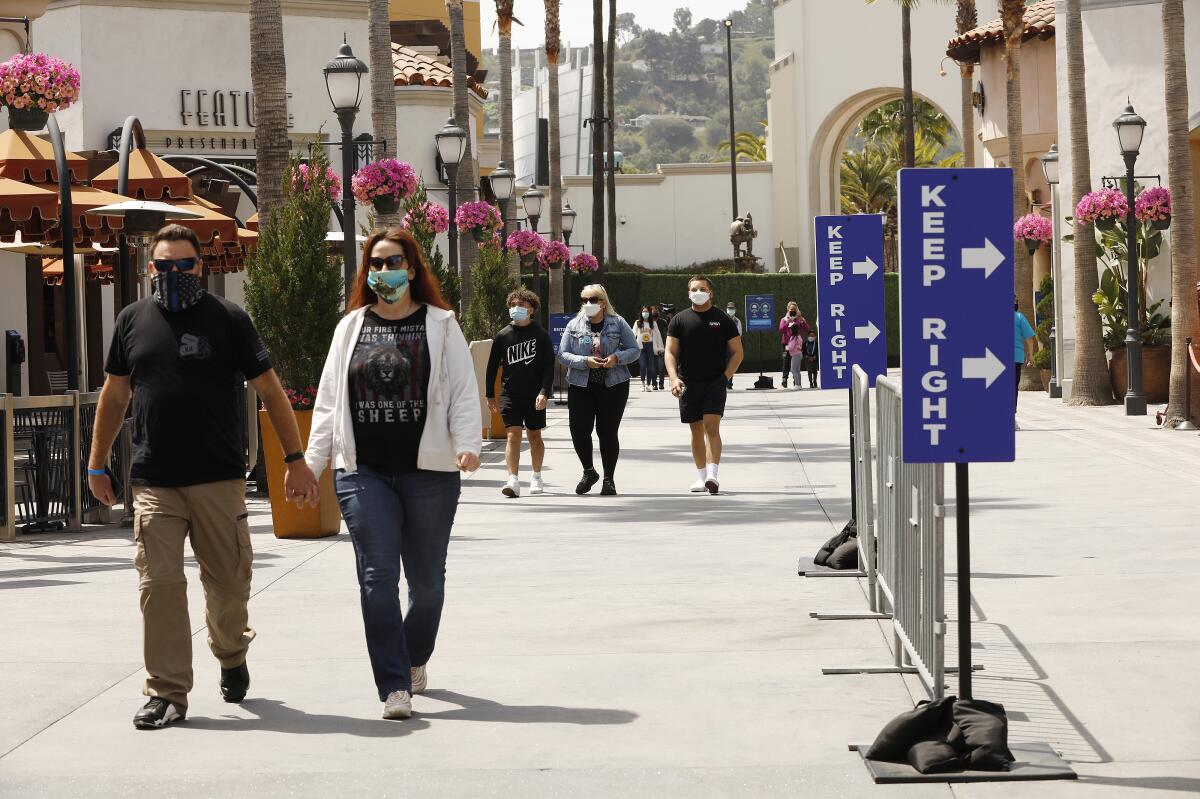
- Share via
Los Angeles County has one foot in the most lenient tier of the state’s COVID-19 reopening system, a momentous achievement for a region that was once so ravaged by the coronavirus that it was considered the epicenter of the pandemic in California.
According to state data released Tuesday, the county’s rate of new coronavirus cases — adjusted based on the number of tests performed — dropped to 1.9 per day per 100,000 people, low enough to enter California’s yellow tier, the final of four. The county would have to maintain its numbers until next week to advance.
“It’s so encouraging to see the work we’re doing together having such a profound effect on the health and well-being of people all across our communities,” L.A. County Public Health Director Barbara Ferrer said Monday, before the new data were unveiled.
Over the last week, California has reported an average of 1,901 new cases per day, a 34% decrease from two weeks ago, according to data compiled by The Times.
A move into the final tier would cap L.A. County’s stunning advancement through California’s reopening framework.. It was only about six weeks ago that the county moved out of the most restrictive, purple, tier, in which indoor operations are suspended or severely limited across a host of business sectors.
In the yellow tier, most businesses can operate indoors, with modifications.
County tier assignments are based on three factors: adjusted coronavirus case rate, the rate at which conducted tests come back positive and a health-equity metric applied to ensure that the positive test rate in poorer communities is not significantly higher than the county’s overall figure. Counties must record two consecutive weeks of qualifying data to advance to a less restrictive tier and must stay in a tier at least three weeks before moving again.
Reaching the yellow tier requires an adjusted daily new case rate of less than 2 per 100,000 people, overall test positivity of less than 2% and a health-equity positivity of below 2.2%.
While L.A. County’s positivity and health equity percentages are well within the yellow range, the region is on the knife’s edge when it comes to case numbers. Without the testing-based adjustment, L.A. County’s raw case rate of 3.6 would be too high to progress.
Even as most areas of California have widely reopened in the aftermath of the devastating fall-and-winter coronavirus surge, the yellow tier has remained a small club. Only four of the state’s 58 counties — Alpine, Sierra, Lassen and Mendocino — have made it that far as of this week.
Those areas combined are home to about 123,000 Californians, a mere fraction of L.A. County’s population of 10 million.
Here’s what is reopening as statewide travel rebounds
Three other counties — San Francisco, Marin and Trinity — are in the same boat as L.A. and could reach the yellow level next week if they maintain their numbers.
Advancing to the final category was even tougher before California revised its reopening benchmarks earlier this month after hitting a self-set goal of administering 4 million vaccine doses in the state’s hardest-hit and most disadvantaged communities.
Before that, entering the yellow tier took an adjusted daily new case rate of less than 1 per 100,000 people.
The tiers will soon be moot, however. California is aiming to scrap the framework and fully reopen its economy on June 15, though some safety rules will remain in place.
Orange County will continue to offer COVID-19 shots at several other locations, including a new mass vaccination site at the Great Park in Irvine.
L.A. County — home to roughly a quarter of all Californians — in many ways reflects and helps chart the course of the pandemic statewide.
Over the last week, California has reported an average of 1,871 new cases per day, down roughly 38% from two weeks ago, according to data compiled by The Times.
Case counts haven’t been this consistently low since last spring.
California’s latest seven-day rate of new coronavirus cases, 33 per 100,000 people, is the lowest of any state — and well below the nationwide rate of 116.4, according to data from the Centers for Disease Control and Prevention.
The state’s steep drop in newly confirmed infections doesn’t appear to be a reflection of decreased testing, either. Since March, the seven-day average of daily tests conducted has hovered around 200,000.
Meanwhile, the proportion of those tests coming back positive has nosedived, reaching a seven-day average of 1.2% as of Tuesday. During the darkest days of the fall-and-winter surge, the weekly statewide positivity rate approached 15%.
The number of coronavirus-positive patients in California’s hospitals has also continued to tumble. On Monday, there were 1,776, including 431 in intensive care. Both figures are among the lowest recorded during the pandemic.
As infections and hospitalizations plummet, so too does the number of Californians dying from COVID-19. Over the last week, the state has reported about 62 deaths per day; during the height of the surge, the daily toll was in the hundreds, Times data show.
Overall, California has had more than 3.7 million confirmed coronavirus cases and more than 61,100 deaths.
Experts say a continuation of the progress will hinge on two primary factors: more people getting vaccinated and continued adherence to public health protocols that can keep the coronavirus from gaining a new foothold.
The CDC says fully vaccinated Americans don’t need to wear masks outdoors anymore unless they are in a big crowd of strangers.
Residents need only look at the situation unfolding in other areas of the globe — in particular, India — for a cautionary tale of how quickly the pandemic can again rage out of control.
“The scenes we’re seeing from across the world will be chillingly familiar to everyone who endured the surge in this county,” Ferrer said during a briefing. “And while our situation has improved so much since then, we’re not immune from seeing this kind of situation again. We must use every tool we have to prevent this from happening.”
Though it’s heartening to see the dwindling death rate, “just about everyone dying today from COVID would be alive if they were fully vaccinated,” she added.
“While it’s been a frightening year filled with unknowns about this new virus and frequently changing guidance about everything from masks to wiping down groceries, we do know that the three vaccines we’re using are very safe,” Ferrer said.
Los Angeles County continues a drop-in COVID vaccination option for anyone 16 and older. Appointments are wide open in other counties too.
CDC data show that providers throughout California have administered 29.1 million total doses.
To date, 47.2% of Californians have received at least one dose, and 28.8% are considered fully vaccinated, meaning they have received both required doses of the Pfizer-BioNTech or Moderna vaccines or a single dose of the recently resumed Johnson & Johnson vaccine.
Health officials say it’s critical for residents to complete the required inoculation schedule, meaning both doses of Pfizer-BioNTech or Moderna. While it’s true that “one dose does offer some protection” against COVID-19, “it’s not as strong a level of protection as what two doses offer,” Ferrer said.
In L.A. County alone, nearly 278,000 people who have received a first dose are overdue for their second, according to figures Ferrer presented Monday. The recommended interval between doses is three weeks for Pfizer-BioNTech and four weeks for Moderna.
L.A. reopening fast: What Yellow Tier means for restaurants, bars, amusement parks, gyms and more
More to Read
Sign up for Essential California
The most important California stories and recommendations in your inbox every morning.
You may occasionally receive promotional content from the Los Angeles Times.
